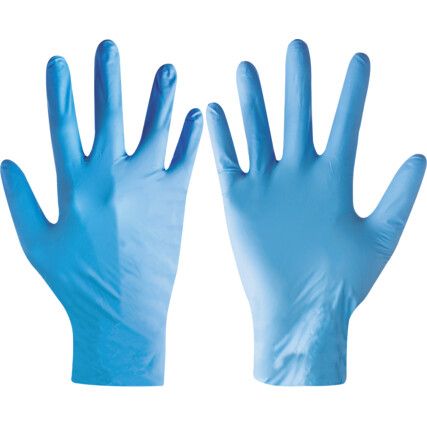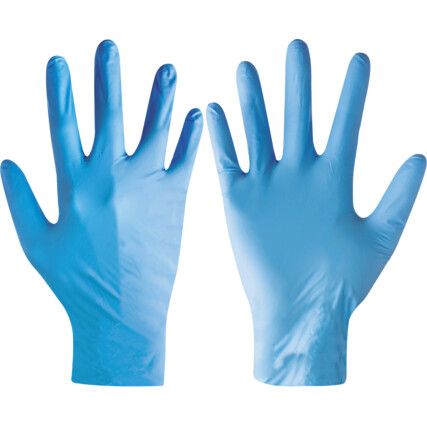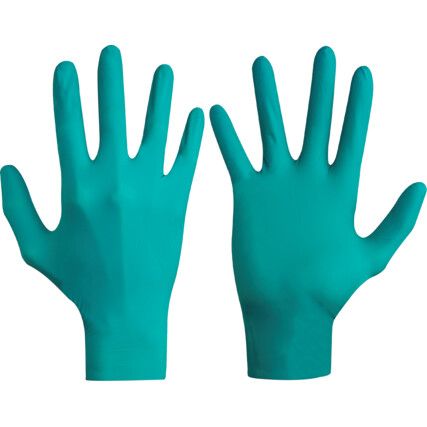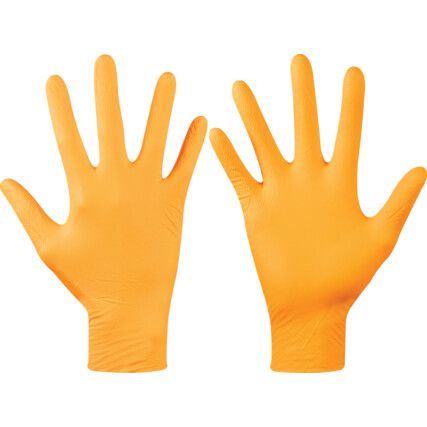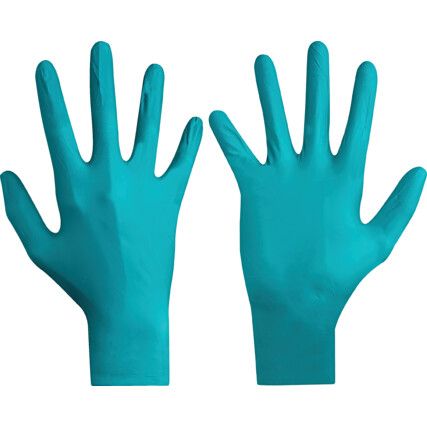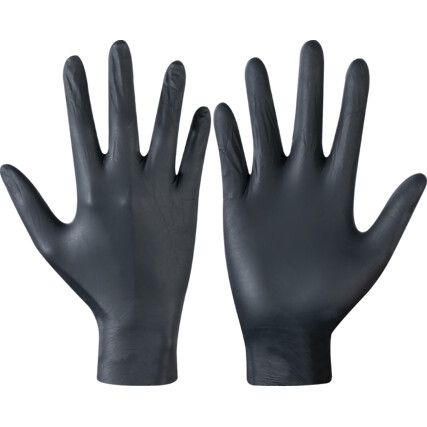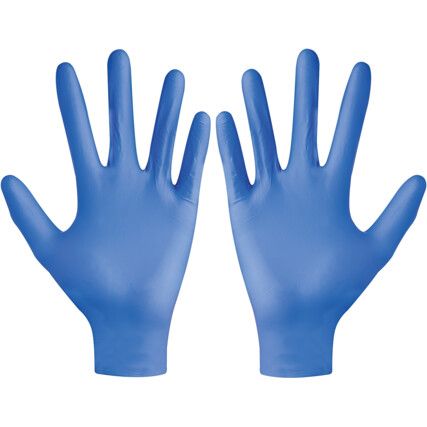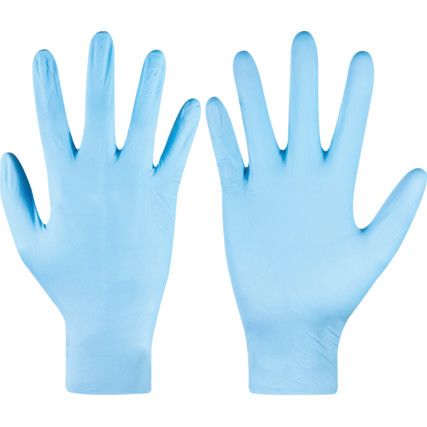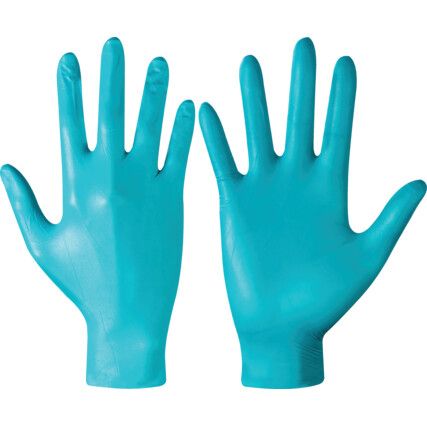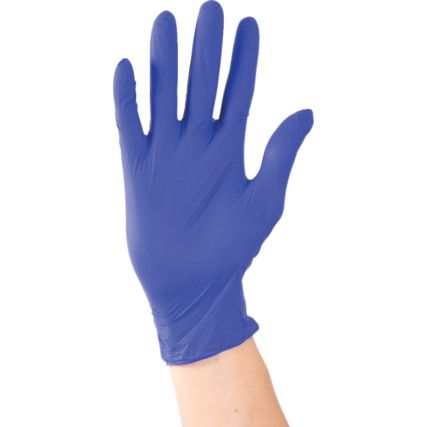Disposable Gloves
For detailed information on hand protection see our Hand Protection Guide here and view our sizing guide here.
For single-use protection, our selection of disposable PPE gloves meets the requirements for a wide range of industries. Arguably the most reliable solution to work-related dermatitis and other debilitating skin issues, our single-use gloves ensure the end-user is protected against contact with potentially harmful substances in the workplace.
Choose from a wide range of high-performance products from brands such as Ansell®, Polyco® and Showa®.
What are disposable gloves?
Designed for single-use, disposable gloves protect against a hazard for a limited amount of time and can help to prevent issues of cross-contamination in certain settings.
Why disposable gloves?
When the skin frequently comes into contact with potentially harmful liquids or stays wet for long periods, the result can be work-related skin conditions, such as dermatitis. These can be extremely painful and in worse case scenarios, prevent a person from doing their job. Wearing disposable gloves when needed can prevent these issues altogether and keep staff healthy.
Often supplied in bulk packs, disposable gloves are also an economical solution to frequent, messy jobs. Regularly used to protect against hazardous liquids, once used they either become hazardous waste, or contaminated with food stuffs or biological matter and must be disposed of accordingly.
When are disposable gloves used?
Widely used in medical settings for examinations and surgeries, disposable gloves are also used in catering industries for food preparation and cleaning, and when handling chemicals or other potentially hazardous liquids.
What standards are applicable to disposable gloves?
Whilst EN ISO 21420:2020 and EN 420:2003 + 1:2009 are the most common standards applicable to disposable gloves, there are some other noteworthy standards to be aware of. These are broken down below.
EN455 - This standard pertains to disposable gloves which are suited for medical uses. This can be split into several sub sections:
• EN 455-1: This standard specifies general requirements for medical gloves, such as the materials used, labeling, and testing methods. It also defines the terms and definitions related to medical gloves.
• EN 455-2: This standard specifies requirements for physical properties of medical gloves, including dimensions, freedom from holes, and tensile strength.
• EN 455-3: This standard provides requirements for determining the biocompatibility of medical gloves, ensuring they do not cause harm to the patient or user.
• EN 455-4: This standard specifies requirements for the shelf life determination of medical gloves, including storage conditions and the expected durability of the gloves.
• EN 455-5: This standard outlines the requirements for the testing and evaluation of the protection against microbial contamination of the gloves.
EN 1186 - This standard pertains specifically to materials and articles intended to come into contact with food. Disposable gloves used in food handling should meet the requirements of this standard.
EN374 - Similarly to EN455, this standard can be split into several subsections as outlined below.
• EN 374-1: Terminology and Performance Requirements: This part defines key terms related to protective gloves and outlines general performance requirements for chemical and biological protection.
• EN 374-2: Determination of Resistance to Water Penetration: This part specifies test methods for evaluating a glove's resistance to water penetration. It is important to ensure that gloves remain impermeable when exposed to liquids.
• EN 374-3: Determination of Resistance to Permeation by Chemicals: EN 374-3 outlines the test methods for evaluating a glove's resistance to penetration by specific chemicals. This part is essential for gloves used in environments where exposure to hazardous chemicals is a concern.
• EN 374-4: Determination of Resistance to Degradation by Chemicals: EN 374-4 focuses on assessing the resistance of gloves to degradation when exposed to specific chemicals. This is crucial to ensure that gloves maintain their structural integrity and protective properties.
• EN 374-5: Terminology and Performance Requirements for Micro-Organism Risks: EN 374-5 defines terms and performance requirements for gloves intended to protect against microorganisms, such as bacteria and viruses.
And finally, though less common, some disposable gloves comply with standard EN1149, which relates to protective clothing with electrostatic properties. This standard specifies the requirements and test methods for materials and garments designed to protect against electrostatic discharge in environments where there is a risk of explosion due to the presence of flammable gases or dust. It is brken down into two parts:
• EN 1149-1: Test Method for Surface Resistivity: This part of the standard provides a test method for determining the surface resistivity of materials used in protective clothing. Surface resistivity measures how easily an electric charge can be conducted across the surface of a material.
• EN 1149-5: Performance Requirements and Test Methods for Protective Clothing with Electrostatic Properties: EN 1149-5 outlines the specific performance requirements for protective clothing with electrostatic properties. It covers aspects like surface resistivity, charge decay, and charge distribution. This part of the standard sets the criteria for materials and garments to qualify as electrostatic dissipative protective clothing.
Disposable glove types
Disposable gloves are available in a range of materials that offer different advantages depending on the task at hand. They must always conform to the correct safety standard for their application and be CE marked.
• Natural rubber latex - A common choice, they're partially biodegradable but can cause Latex (Type I) allergies in some users
• Neoprene (polychloroprene) - Durable with antistatic properties, provides resistance to chemical splash and most acids
• Nitrile - Tough and durable, these gloves are oil-repellent and often used in automotive and machine handling operations
• PL (Polyisoprene) - Sterile, cleanroom class 100, used mainly in lab settings
• Vinyl - Durable and economically priced, these gloves are resistant to oils and some chemicals and are used widely in food preparation
Considerations when choosing disposable gloves
• The end-user - Hand size and comfort must be considered for the wearer to do their job while wearing the gloves.
• Application - the glove should allow for the correct dexterity and performance for the task to be carried out safely.
• Health & safety - the glove should conform to the correct standards for the task at hand.
Disposable gloves jargon buster
To make our range easy to shop, we've put together an explanation of a key standard in PPE gloves, so you can find just what you're looking for.
What does the glove safety standard EN ISO 21420:2020 mean?
As a minimum, all protective gloves must perform to EN ISO 21420:2020, this includes both disposable and reusable gloves. This standard ensures the basic technical specifications a glove must meet if it's to be classed as a safety glove. These include the comfort, the PH value, and marking among others
Let's break it down...
• EN - This is the applicable European standard
• ISO - This is the International Organisation for Standardisation and is a global regulating body for safety and quality standards
• 21420 - This is the assigned legislation number
• 2020 - This is the year the safety standard around PPE gloves was implemented. It replaces EN 420:2003 + 1:2009 as the standard has now been integrated into the ISO system
• Existing certificates for EN 420:2003 + 1:2009 remain valid until their expiry date
FAQs
What's the difference between surgical and disposable gloves?
Safety standards and directives provide the technical standards required for surgical gloves. Gloves used for medical examinations and surgeries are usually made from latex, as this material is tactile and allows for good dexterity to perform complex tasks. Surgical gloves must conform to BS EN 455-2:2015, which outlines the technical specifications a medical, single-use glove must adhere to.
When should gloves be changed?
Disposable gloves are single-use and should be disposed of immediately after use. For all other PPE gloves, it's recommended that once the external layer has been compromised (ripped, saturated etc) they are replaced immediately to ensure the user remains protected.
For more information on hand protection see our Hand Protection Guide... https://www.cromwell.co.uk/info/safety-technical-hand-protection
